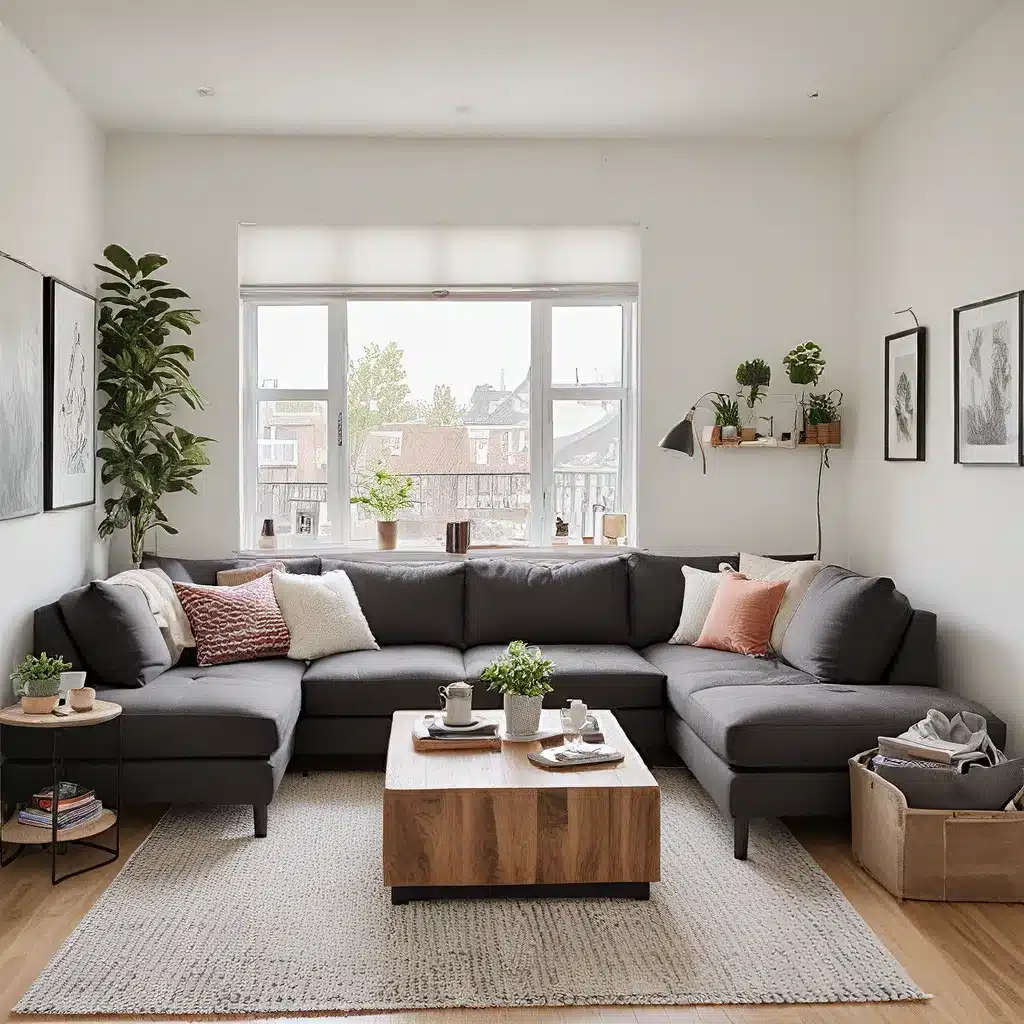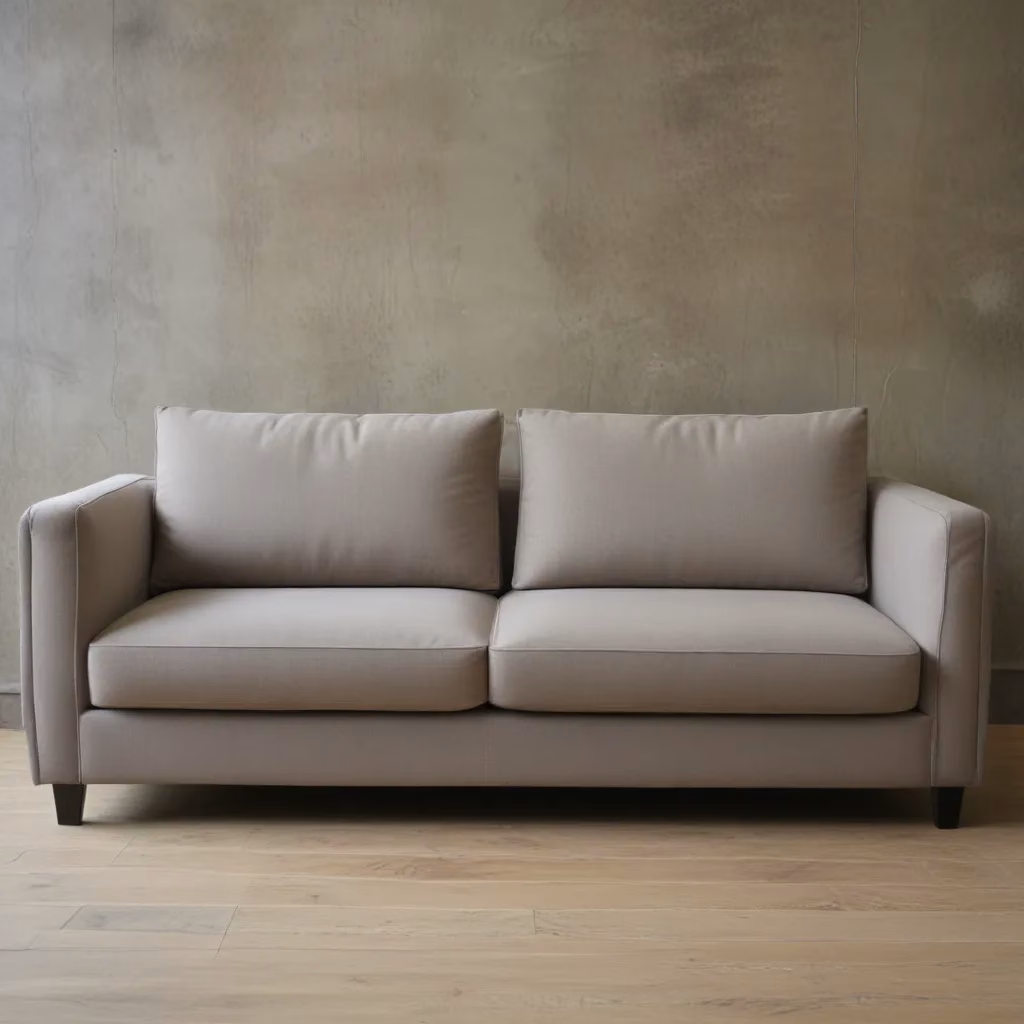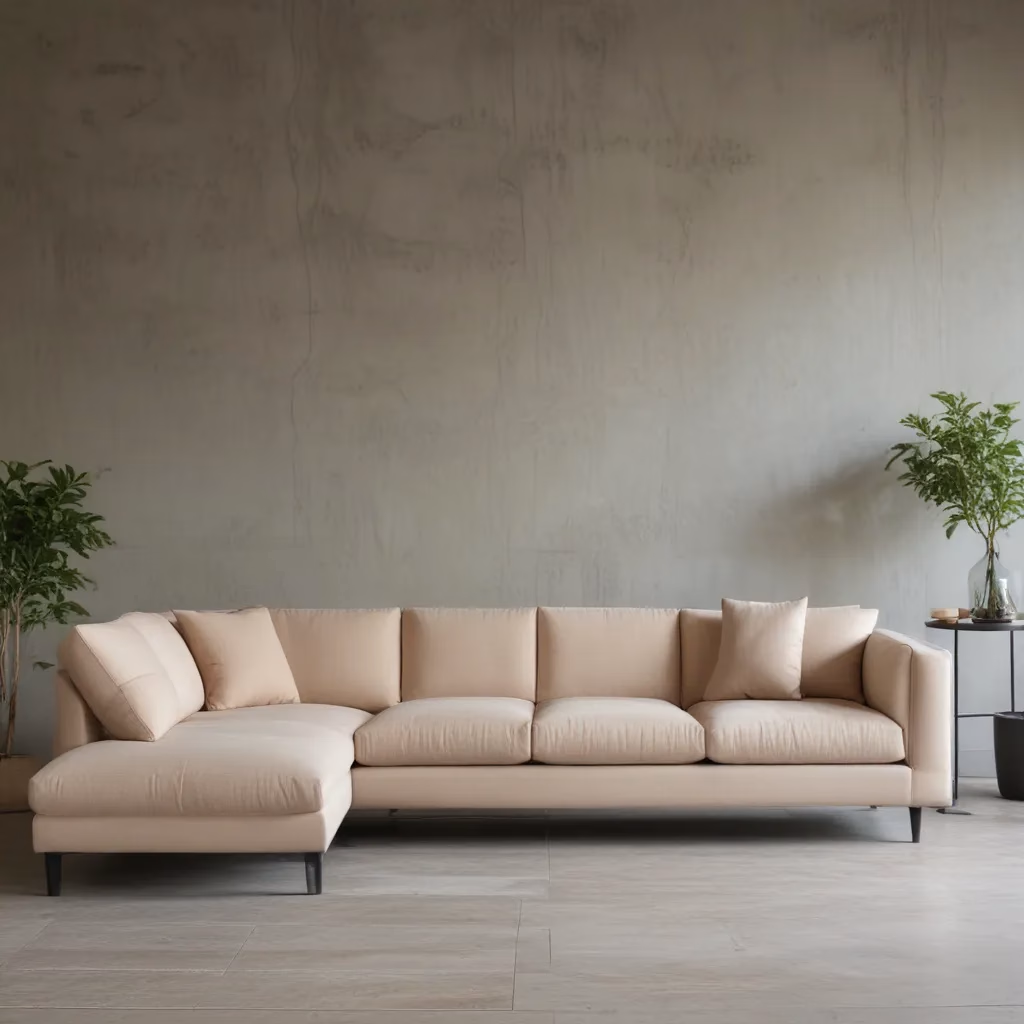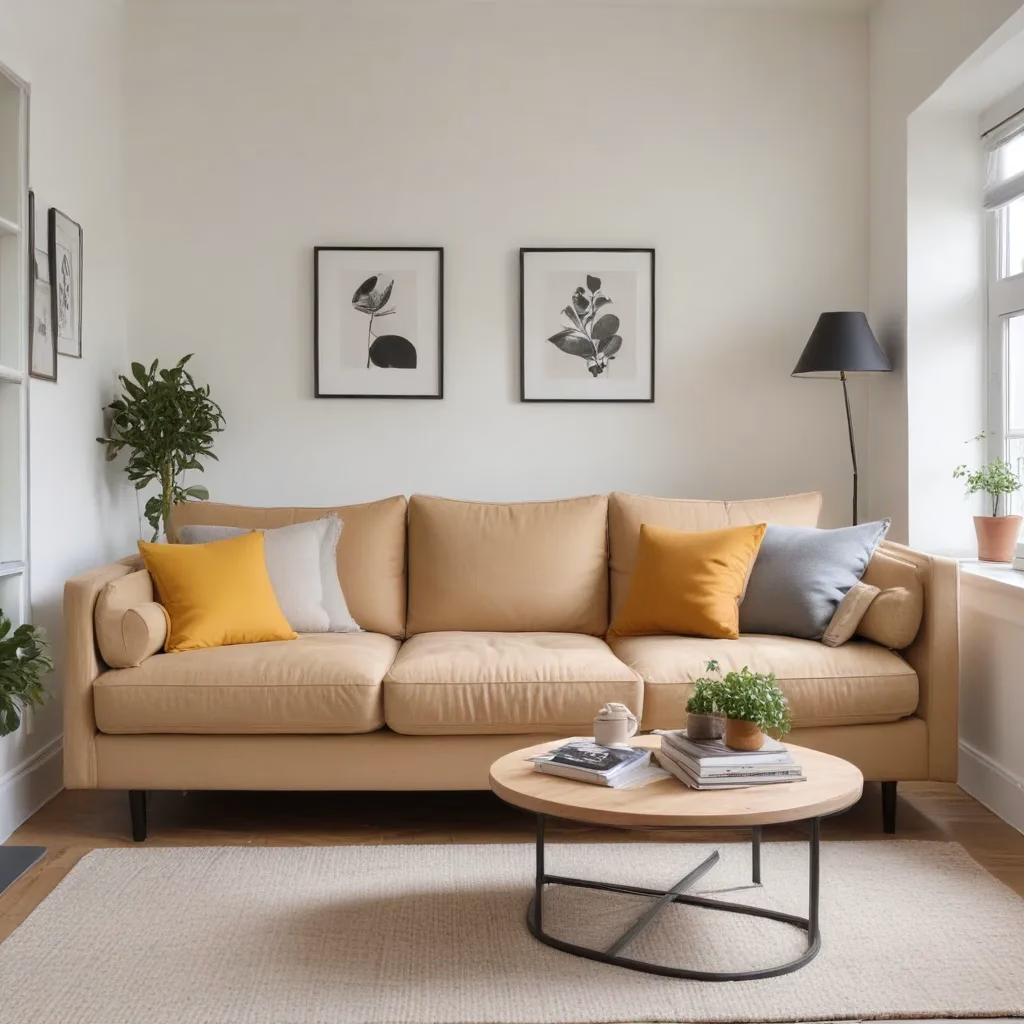
Living in a small home can be a cozy and charming experience, but it also comes with its fair share of design challenges. Trying to cram all the necessary furniture and functionality into a limited square footage can feel like playing an endless game of Tetris. But fear not, my fellow compact-living enthusiasts – I’ve got some tricks up my sleeve to help you make the most of your petite pad.
Finding the Perfect Sectional Fit
When it comes to small living rooms, the sectional sofa is often the holy grail of furniture. These versatile wonders can provide ample seating while still maintaining a sleek, space-saving profile. But the key is finding one that fits your specific space like a glove.
I recently stumbled upon a “Stones Brooklyn” living room that perfectly demonstrates this concept. The designers opted for a cozy sectional that seemed to mold seamlessly into the room, transforming the heart of the space into a cozy conversation nook. By floating the sofa in the middle of the room rather than pushing it against the walls, they created a sense of intentional zoning that makes the room feel so much more inviting.
And let’s not forget the power of hidden storage! Many sectional designs these days come with built-in compartments beneath the cushions – perfect for stashing away extra blankets, remotes, or any other small-space essentials. It’s like having an extra closet right at your fingertips.
So when you’re on the hunt for the perfect sectional, pay close attention to the dimensions and be willing to get a little creative with the placement. Don’t be afraid to try unconventional arrangements – you might be surprised by how much it opens up the room.
Layering Lighting for Depth and Ambiance
Lighting is such a crucial element in small spaces, and it’s not just about function – it can also create the illusion of depth and make a room feel larger than it is. The key is using multiple lighting sources at varying heights.
Take a page from interior designer Christina Murphy’s playbook and incorporate wall sconces to save precious floor space. These chic fixtures can add a touch of sophistication while also freeing up real estate for other furnishings. And don’t forget about the power of a statement chandelier or pendant light – these attention-grabbing pieces can draw the eye upward and make the ceiling feel higher.
But the real magic happens when you layer in smaller, more intimate lighting sources like table lamps and floor lamps. These create cozy pockets of illumination that make the space feel warm and inviting, rather than stark and clinical.
I was particularly inspired by the living room of designer Thom Browne, where the clever use of slim profile furniture and strategic lighting really opens up the narrow space. By opting for leaner tables and wall-mounted shelves, he was able to maximize every square inch without sacrificing style.
Defining Zones for Seamless Functionality
When you’re working with a small living room, it’s crucial to get creative with how you divvy up the available space. The trick, as I learned from Architectural Digest, is to “break the space up into clear chunks” – defining distinct areas for different activities like relaxation, dining, and work.
In the “Amy Stone” living room, the designers achieved this by using an area rug to anchor the conversation zone, then placing the dining table and console desk outside of that boundary. This subtle zoning technique creates a sense of organization and flow, preventing the room from feeling like a chaotic jumble of furniture.
And speaking of furniture, don’t be afraid to get a little unconventional with your choices. A vintage Eames chair or a custom-made aluminum vase can add unexpected flair while still maximizing the limited square footage. It’s all about finding that perfect balance of form and function.
The living room of homeowners Rachel Straub and Todd Banhazl is another great example of strategic zoning. By sticking to a defined color palette of blues and greens, they were able to create a cohesive, harmonious look that never feels crowded or overwhelming. It’s a masterclass in making the most of a small space.
Embracing Accents and Accessories
Once you’ve got the big-ticket furniture pieces dialed in, it’s time to have some fun with the finishing touches. Accessories and accent pieces can be the secret sauce that takes your small living room from “meh” to marvelous.
Mirrors, for instance, are an absolute game-changer. Not only do they reflect light to make the space feel brighter and more open, but they can also serve as the focal point of a gallery wall or mantel display. And let’s not forget the power of artwork – a bold, attention-grabbing piece can instantly elevate the entire room.
Another nifty trick I picked up is to utilize any existing ledges, windowsills, or other surfaces as impromptu display areas. Homeowners Coke Bartrina and Nuria Val, for example, used the upper ledge in their sitting room to house a projector, freeing up precious floor space that would have been occupied by a traditional TV.
And don’t be afraid to get a little unconventional with your accent pieces. A vintage Eames chair or a custom-made aluminum vase can add unexpected flair while still maximizing the limited square footage. It’s all about finding that perfect balance of form and function.
Embracing the Possibilities
At the end of the day, tackling a small living room is all about embracing the possibilities rather than focusing on the constraints. With a little creativity, some strategic planning, and a touch of personal flair, you can transform even the most diminutive of spaces into a cozy, functional, and downright spectacular sanctuary.
So don’t be intimidated by your square footage limitations – dive in, get your hands dirty, and unleash your inner design superstar. And if you need a little extra help, be sure to check out the custom sectional solutions available at Sofa Spectacular – they’ve got everything you need to make the most of your small-but-mighty living room.



